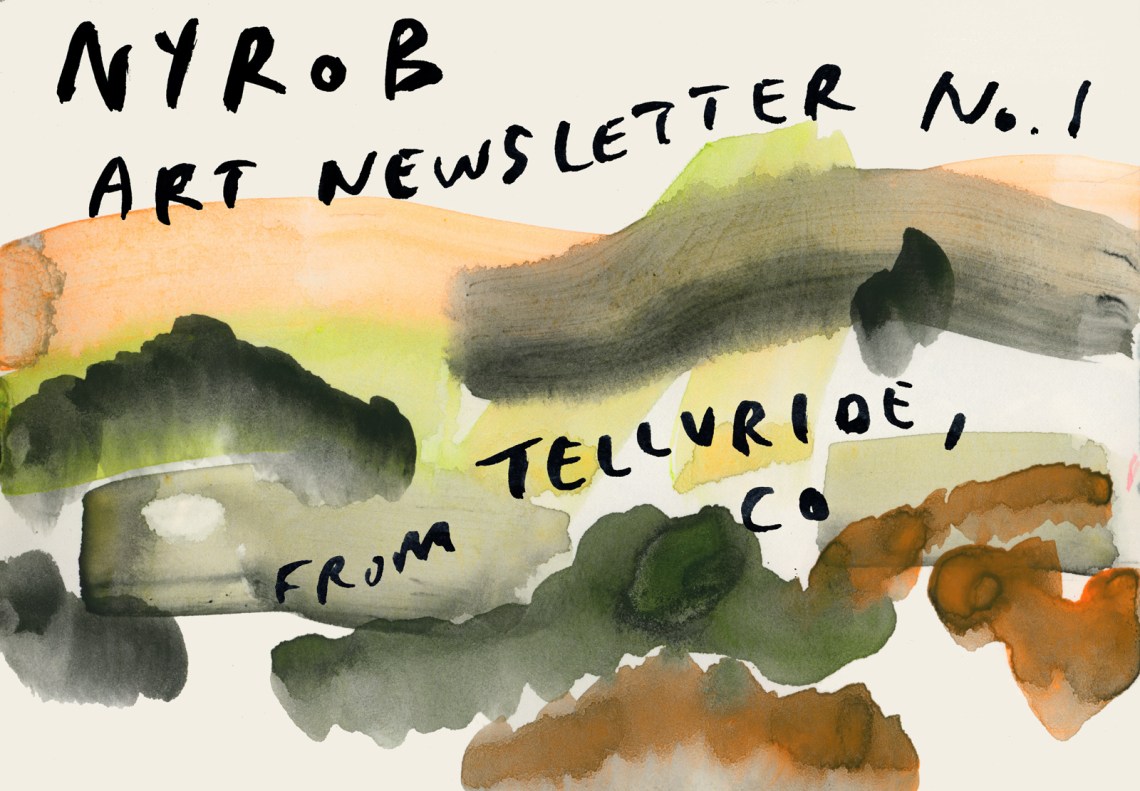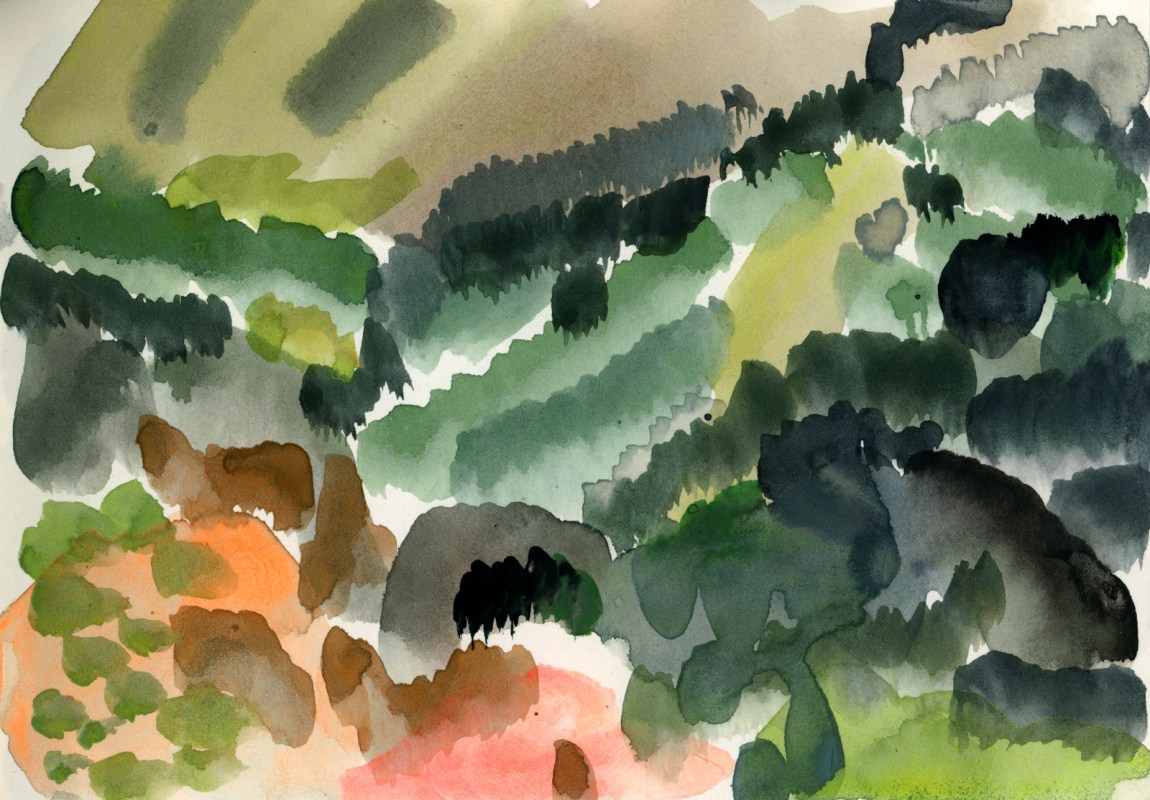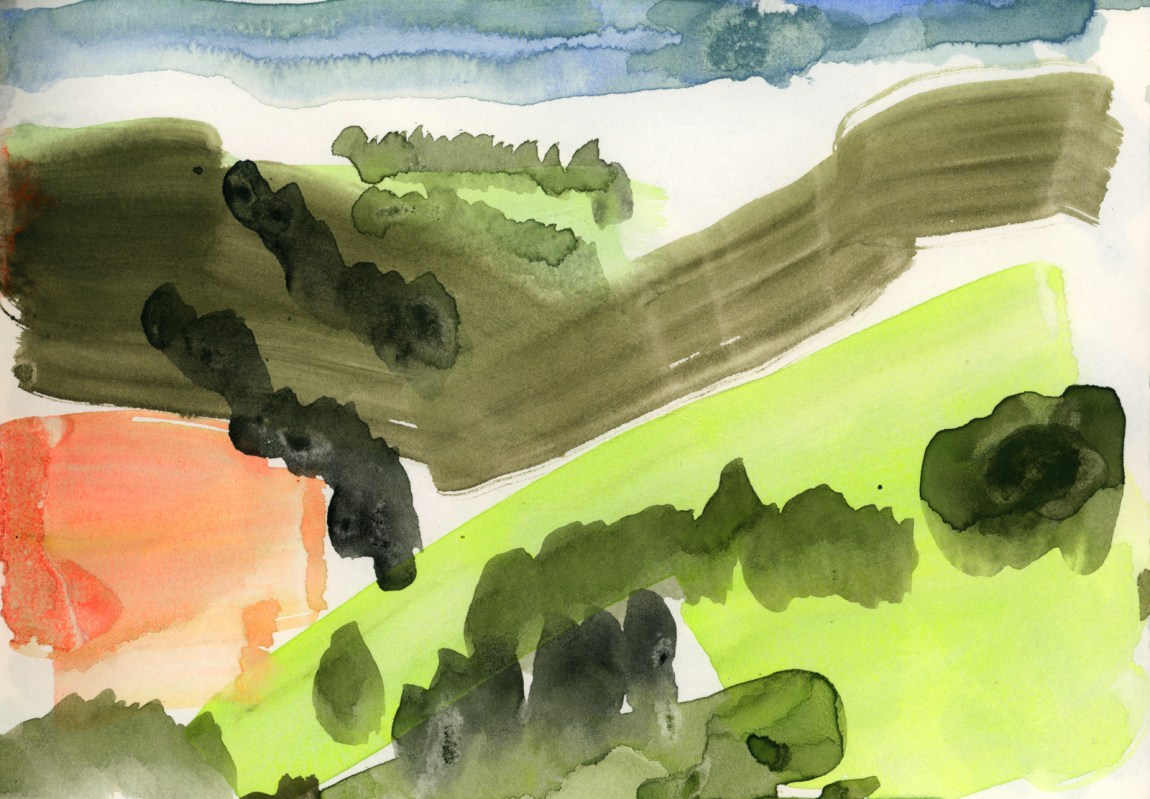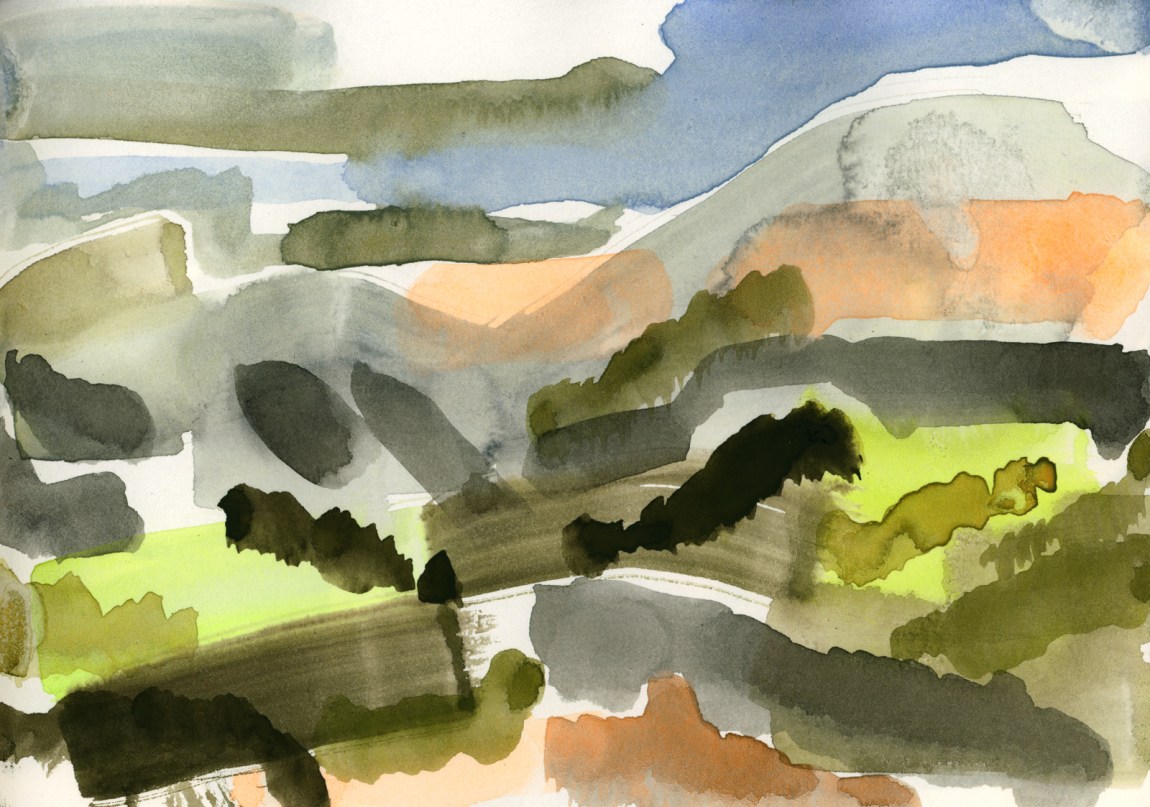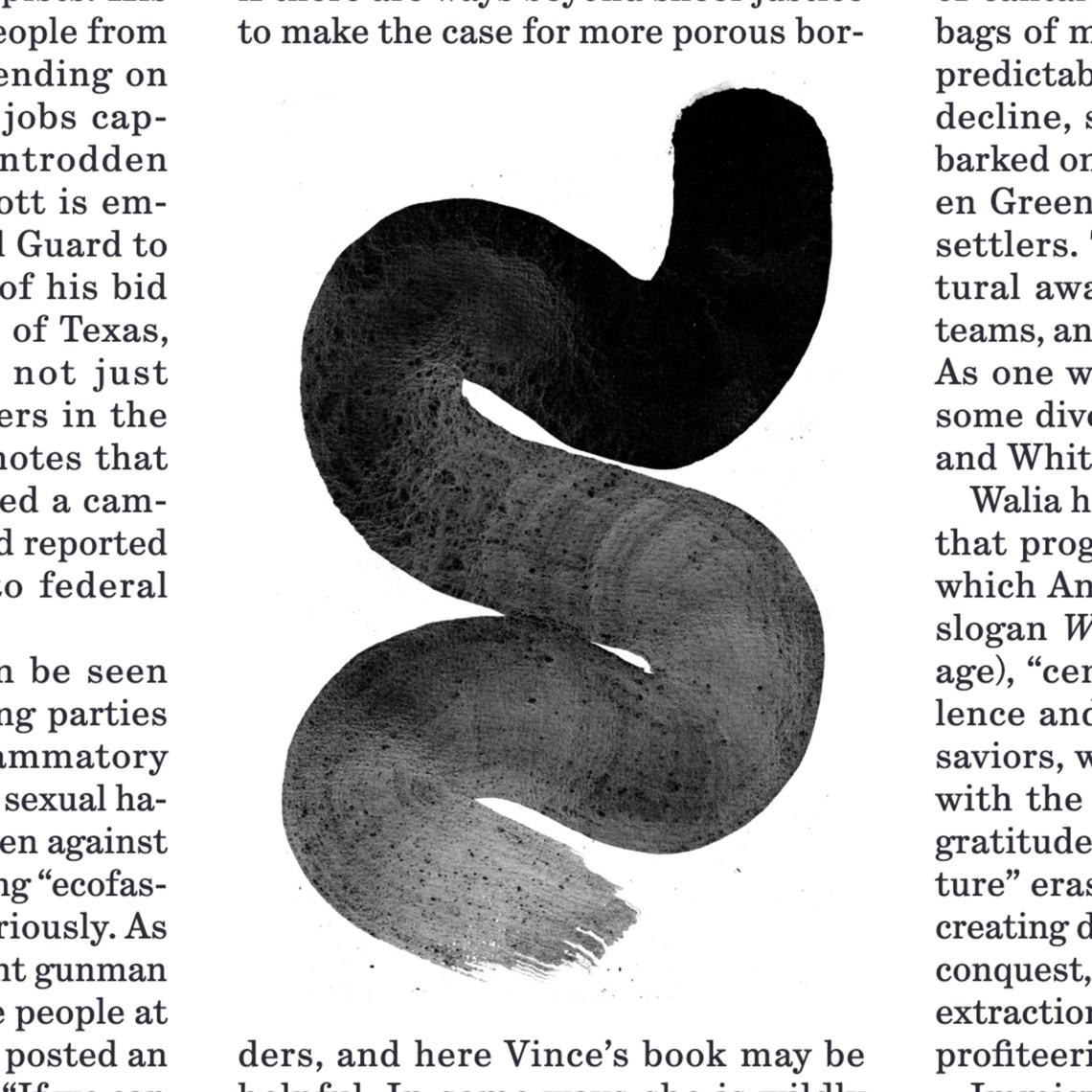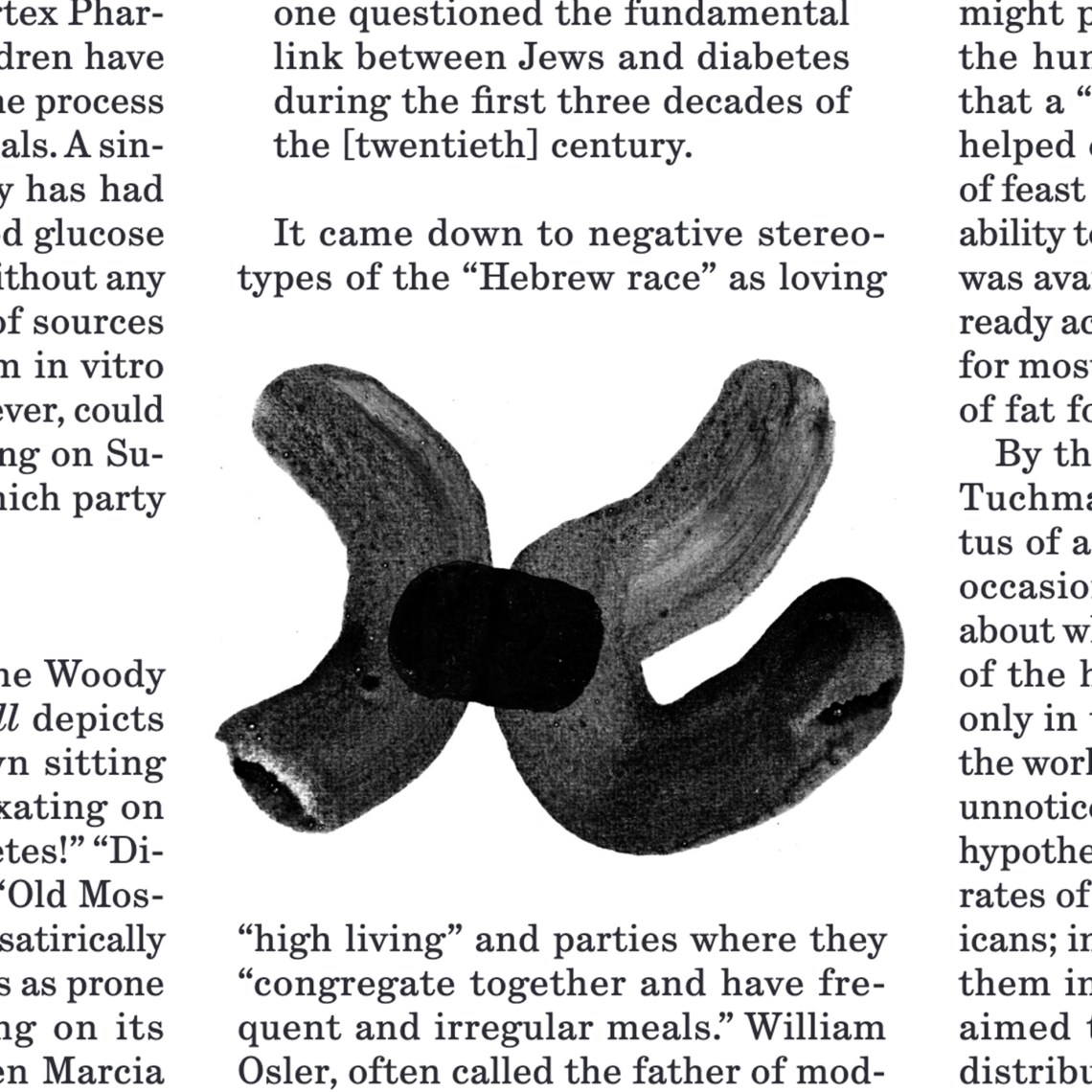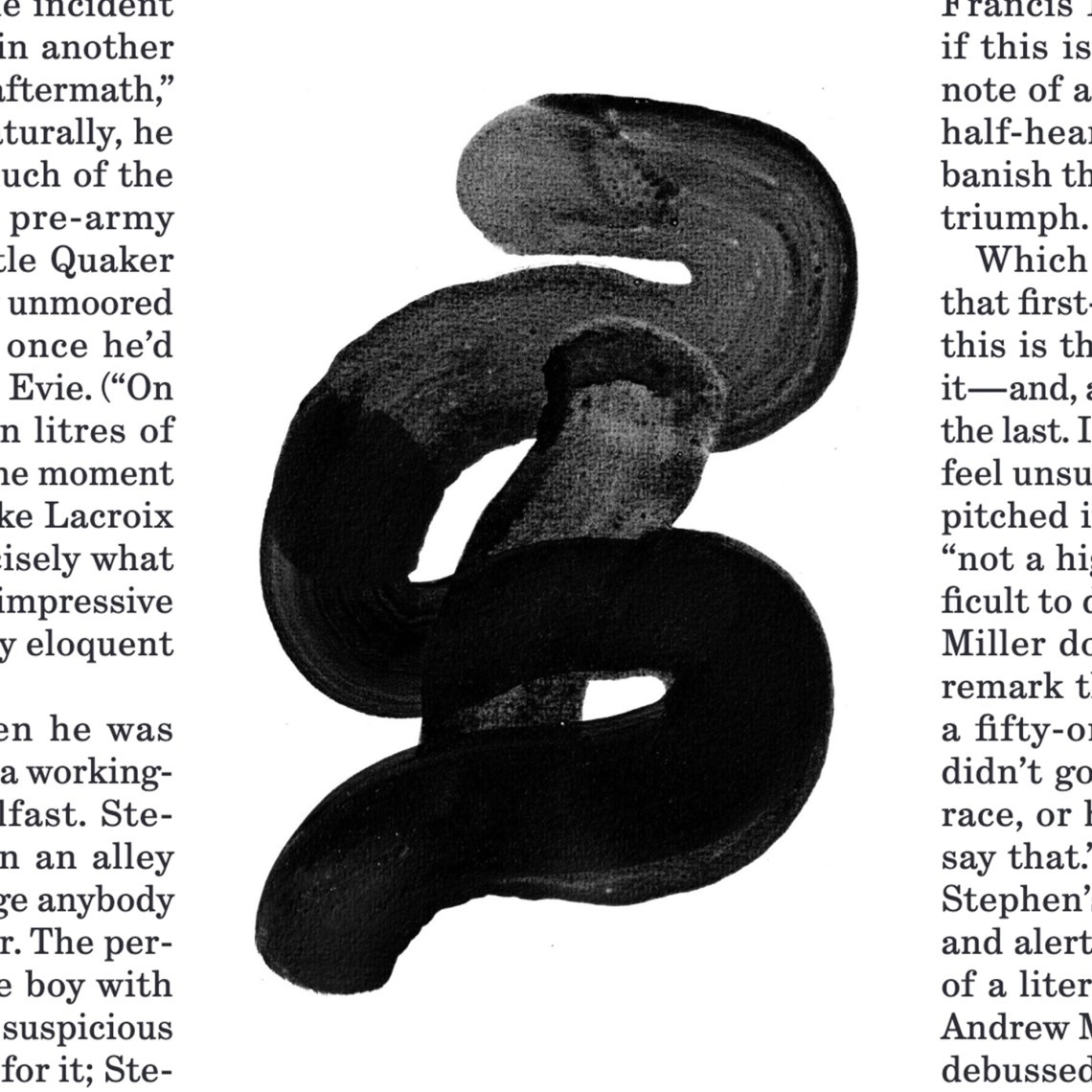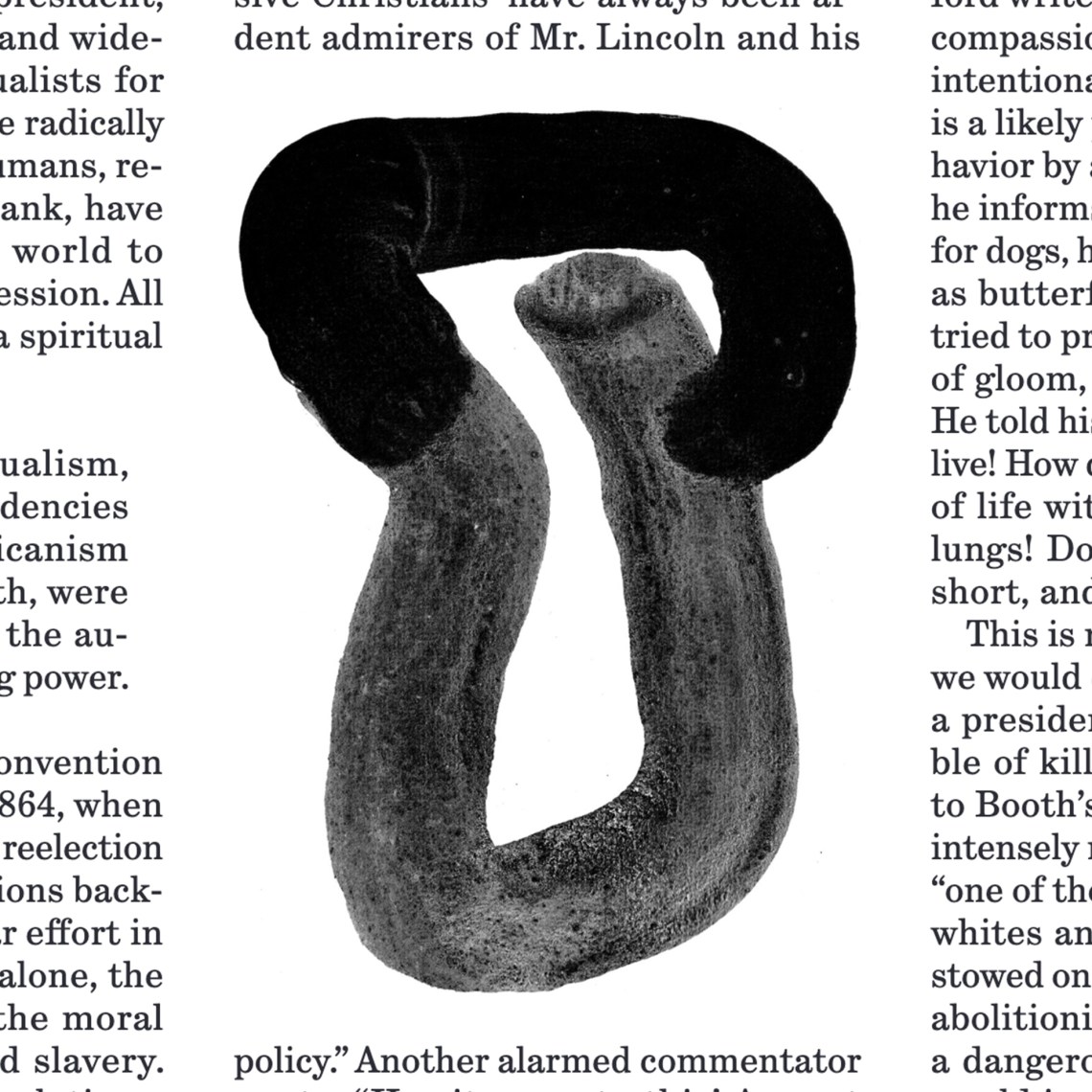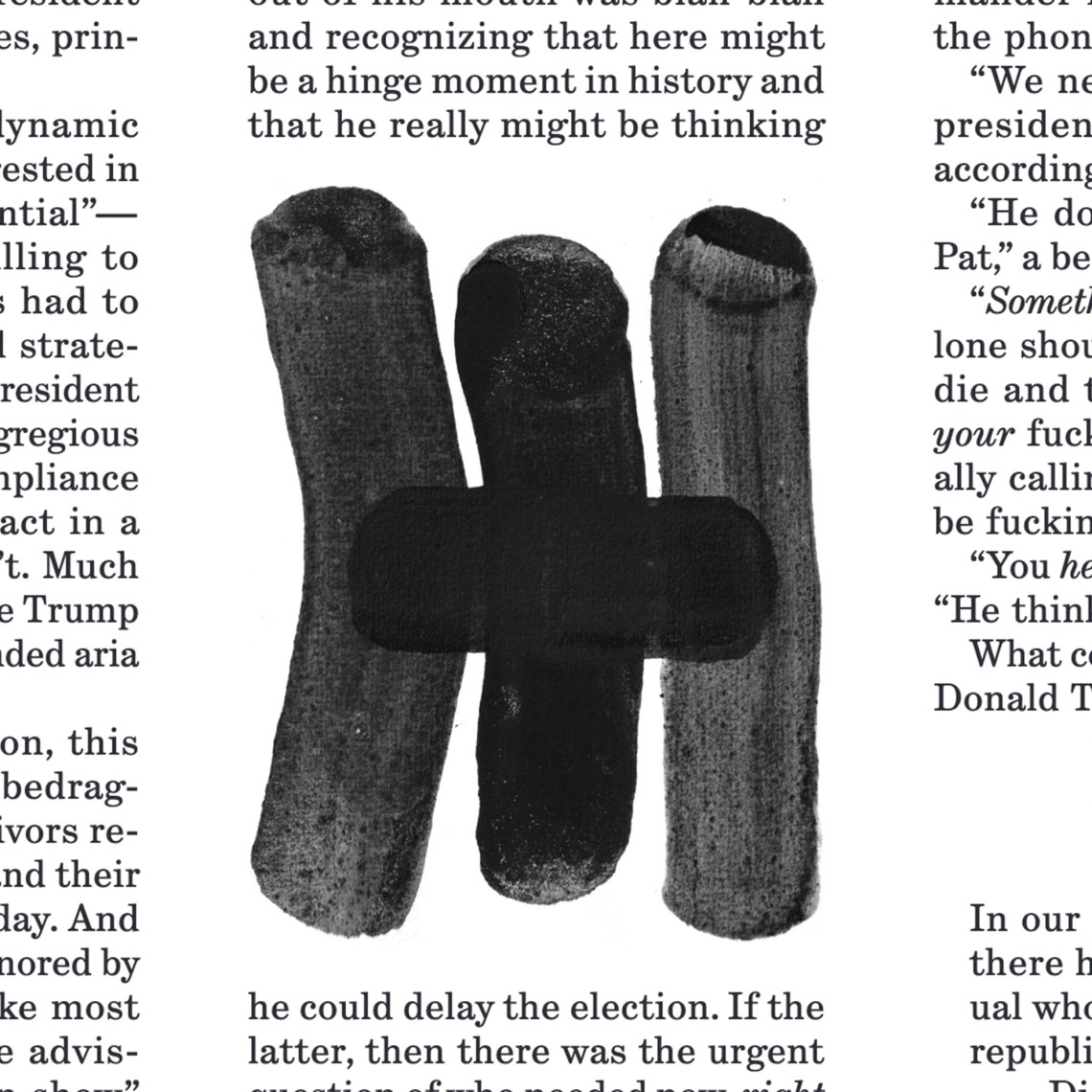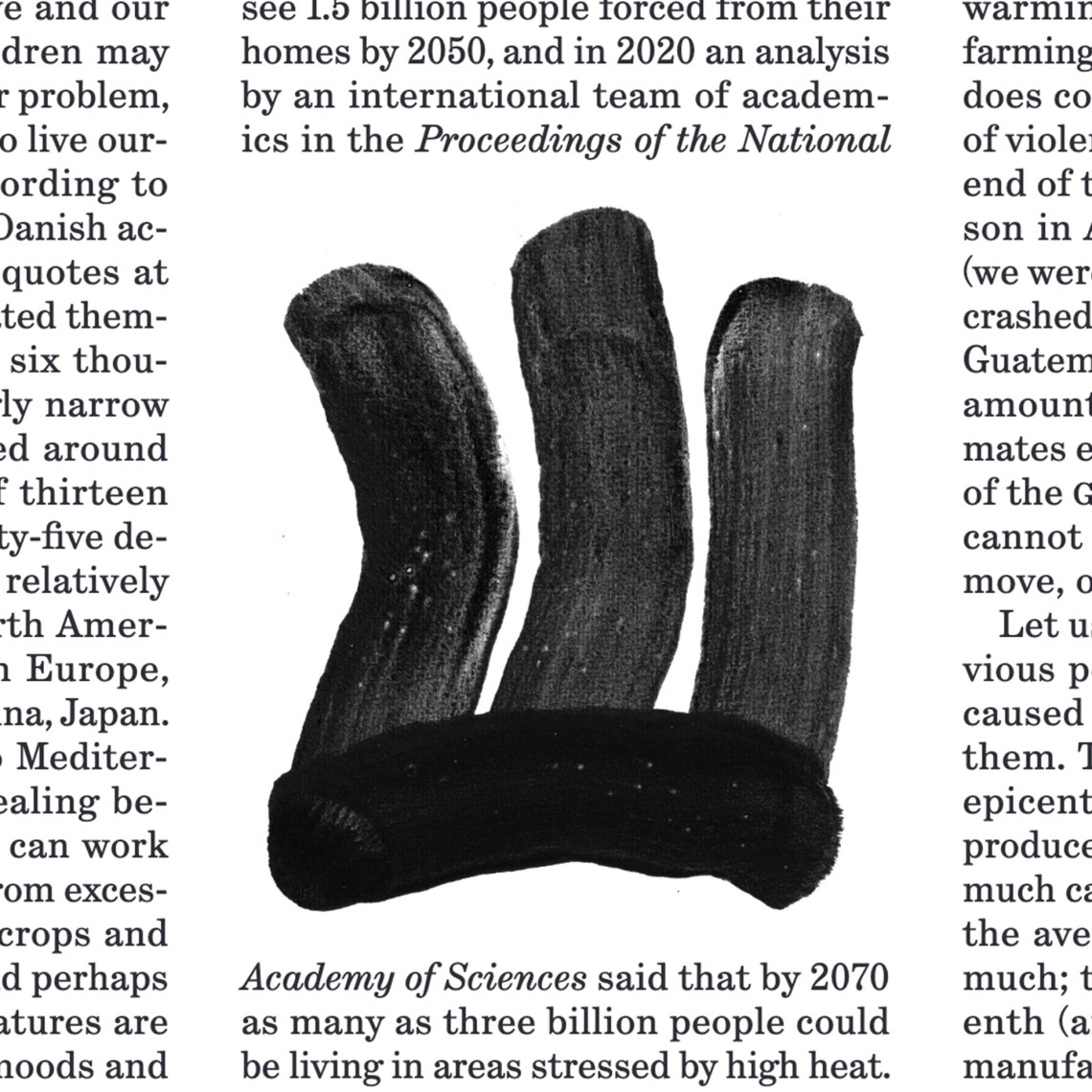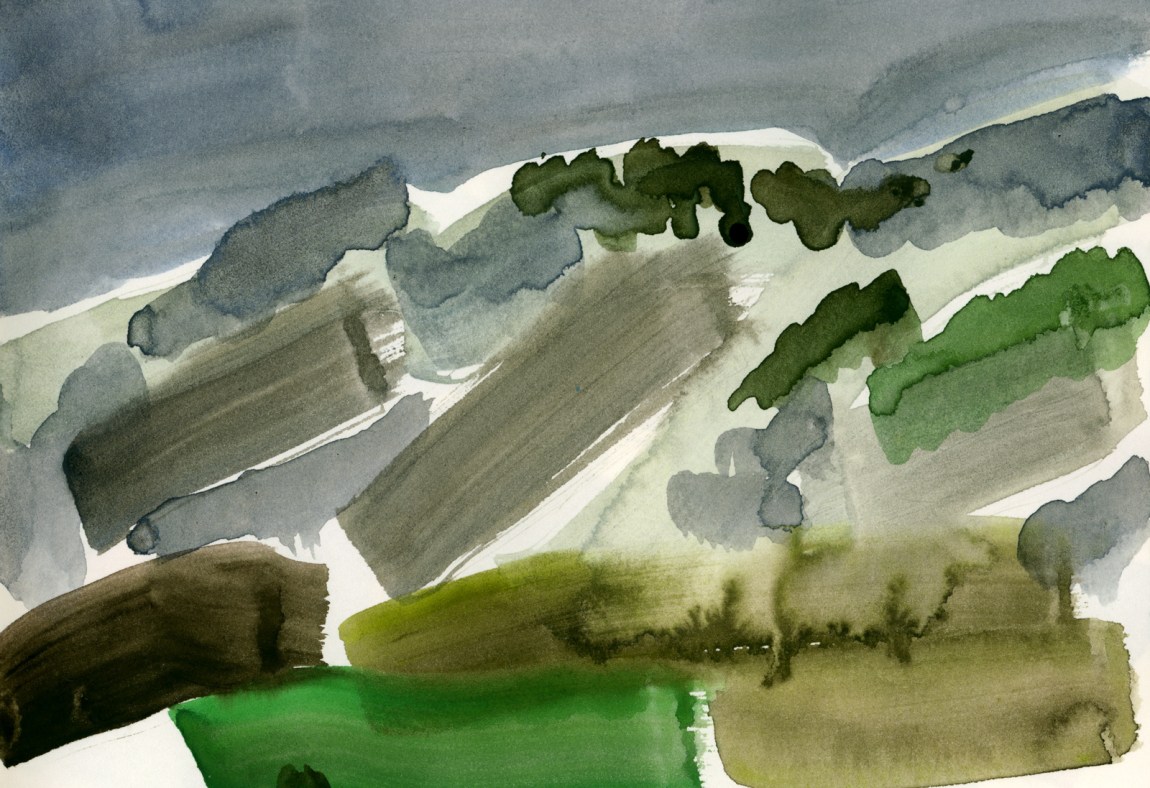This dispatch is part of a new series of newsletters written by our editors. Sign up for our e-mail newsletter to get them delivered to your inbox each week.
Welcome to The New York Review of Books’s inaugural art newsletter, which will appear periodically and focus on the art—illustrations, spots, caricatures, photographs, and more—in the magazine. I’m Leanne Shapton, the Review’s first Art Editor. Each newsletter will appear alongside a series of paintings made from wherever I happen to be while reading, commissioning, or closing pieces for an upcoming issue. This dispatch is from the forty-ninth Telluride Film Festival in Colorado, for which I designed the poster and where I took a quick end-of-summer trip with my daughter.
Choosing the art for our covers is a sort of divining process, a search for existing work that obliquely or directly relates to the content of the magazine. (For special issues, we have commissioned fully illustrated and hand-lettered covers from Jon Klassen, Geoff McFetridge, Carson Ellis, and John Broadley.) The October 6 issue features a Katherine Bradford painting. I’ve been watching her work for a few years now, loving how she paints figures and swimmers in a dark, almost psychoanalytic way—her waterscapes and skies feel cosmic and haunted, and her bathers are like dancers. When I read David S. Reynolds’s review of Terry Alford’s book In the Houses of Their Dead: The Lincolns, the Booths, and the Spirits, I thought of Bradford’s figures and scrolled through as much of her work as I could find online. The painting we chose for the cover, Blue Lap Sitter (2021), feels like a visitation. Accompanying Reynolds’s review inside is a collage by Emmanuel Pierre, a Parisian illustrator and artist who is a dream to work with and whose figures and scenes have a delightfully mannered coquettishness and elegance.
One of the premieres at Telluride was Women Talking, directed by Sarah Polley, an adaptation of the incredible 2018 novel by Miriam Toews (reviewed in our pages by Lili Loofbourow in 2020) about the women of a Mennonite community in Bolivia deciding, in the wake of a long-running series of rapes and assaults by the colony’s men, whether to do nothing, stay and fight, or leave. Polley shot the film in Canada in 2021, as the Delta variant of Covid-19 proliferated around the world. It is a devastating, dreamlike movie, the adapted dialog a bit biblical and apart from time and space. I wondered if Claire Foy, Rooney Mara, Jessie Buckley, and Ben Whishaw were approximating the southern Ontario accents of my youth. I got to speak to Polley about the making of the film, faith, language, and the warm blue-brown desaturated palette of the cinematography. She and her director of photography, Luc Montpellier, looked at the work of the Canadian photographer Larry Towell when composing the images.
While I’m in line to see the movie Close by the Belgian filmmaker Lukas Dhont, I open an e-mail to find a few sketches of the novelist Joseph Roth that the illustrator Yann Kebbi has done for a commanding review by Hermione Lee of a new biography of Roth. We’ve been commissioning Kebbi since I started working here a year ago. His portraits of W. G. Sebald, Elizabeth Hardwick, Roy Heath, and Robert Frost have made him a staff favorite, in no small part because he’s like a punk, four-color disciple of David Levine’s, with his crosshatching and finely penciled likenesses and obvious love of artists and writers. Close is gorgeous and heartbreaking, and in the high altitude tears come easily.
Floods feature in Bill McKibben’s review of three books about climate change and the attendant displacement of people and wildlife, and a landscape painting called Seasonal Drift (2022) by Meghan Hildebrand arrives via Dropbox to illustrate his essay. The spot art in the issue also feels very much part of the natural world—artist and ink-maker Jason Logan made a series of seven abstracts for us using carbon soot and tree gum.
Between sandwiches and Aftersun, a beautiful film about a father-daughter holiday by Scottish director Charlotte Wells, my daughter and I take a steep gondola ride up to Mountain Village to go for a swim and gawp at the San Juan Mountains, including Wilson Peak, which I’m told is the mountain featured on bottles of Coors Light.
On the ride back down I e-mail the Bristol-based artist Anna Higgie about invoicing for the illustration she made to accompany Michael Gorra’s review of Critical Revolutionaries: Five Critics Who Changed the Way We Read by Terry Eagleton. Higgie’s quintuple-portrait depicts F.R. Leavis, I.A. Richards, T.S. Eliot, Raymond Williams, William Empson, and, prominently, Empson’s august beard. The illustrator Paul Davis sends his portrait of Donald Trump for an article by Mark Danner about the former president and what his actions on January 6, 2021, meant.
Advertisement
Thinking about faith and violence in Women Talking and seeing panelists onstage at the festival reminds me of what happened to Salman Rushdie a few weeks ago, and I think of a strangely prescient short story he contributed to the artist Taryn Simon’s current Venice Biennale show, Human Brains: It Begins with an Idea. Simon asked thirty-two writers—including Review contributors Adhaf Souif, Tash Aw, Hari Kunzru, Rivka Galchen, Daniel Kehlmann, Mieko Kawakami, and Maria Stepanova (full disclosure, I wrote one too, about Hippocrates)—for stories about neuroscience.
Rushdie’s remit was to write about Sumerian columns that were carved with what is credited as the earliest interpretation of a dream. He wrote: “We need somebody to come up with a word that persuades us that the idea of gods and no gods are both norms.… If we had such a word, we could agree to differ, and our endless civil war would end.” If only. I am reminded of the Steven Simon and Jonathan Stevenson piece in the Fall Books issue about the future of the United States—and of Paul Sahre’s depressing, acute illustration of our divided country.


